Nucleosynthesis: connecting nuclear physics to astrophysics

LA-UR-19-24624
Matthew Mumpower
Frontiers Summer School
Thursday May 16$^{th}$ 2019

Center
for Theoretical
ASTROPHYSICS
Outline
History lesson
Nucleosynthesis
Where nuclear physics comes in
Heavy element nucleosynthesis
Concluding remarks
Observation: stars seem to shine for a long time...

How can we reconcile this observation with what we know?
What could be powering stars?
Gravitational contraction: first proposed by Mayer, Helmholtz and lord Kelvin
Involves converting gravitational potential energy into heat
This was the leading postulate in the 1800's
Question: How long would the sun radiate under this assumption?
lifetime $\sim$ (Energy) / (Heat output) = E / Q
Let's tackle Q first...
lifetime $\sim$ (Fuel) / (Rate of Fuel use) = E / Q
Let's assume the heat from the sun is radiation dominated
Q = $\sigma$$T^{4}$$A$
$\sigma$: Stefan-Boltzmann constant
$T$: Temperature
$A$: Surface area
$Q \sim 5.67 \times 10^{-8} \times $${5800}^4$$ \times 6.09 \times 10^{12} \times 1000^{2} \sim $$3.9 \times 10^{26}$ Watts
Gravitational energy?
Considering gravitational potential energy
$E = \frac{3}{5}\frac{GM^{2}}{R}$
$G$: gravitational constant
$M$: mass of the sun $\sim 2 \times 10^{30}$ kg
$R$: radius of the sun $\sim 700$ million meters
$E \sim 2.3 \times 10^{41}$ Joules
So ... lifetime $\sim (2.3 \times 10^{41}) / (3.9 \times 10^{26}) \sim 5.8 \times 10^{14}$ seconds
18 million years
Nope...
Who came up with the idea of using nuclear physics?
Eddington's great insight
Nuclear reactions release energy that power stars
"The internal constitution of the stars" (1920)
$E = m c^{2}$
A little bit of mass can create a lot of energy
Question: What percentage of mass will generate enough energy for the sun to last billions of years?
(only 0.07% is needed)
This was the start of nuclear physics + astrophysics → nuclear astrophysics
Question: How long would the sun last if it ran on fossil fuels?
Nucleosynthesis
nu·cle·o·syn·the·sis The formation of new atomic nuclei by nuclear reactions, thought to occur in the interiors of stars and in the early stages of development of the universe.
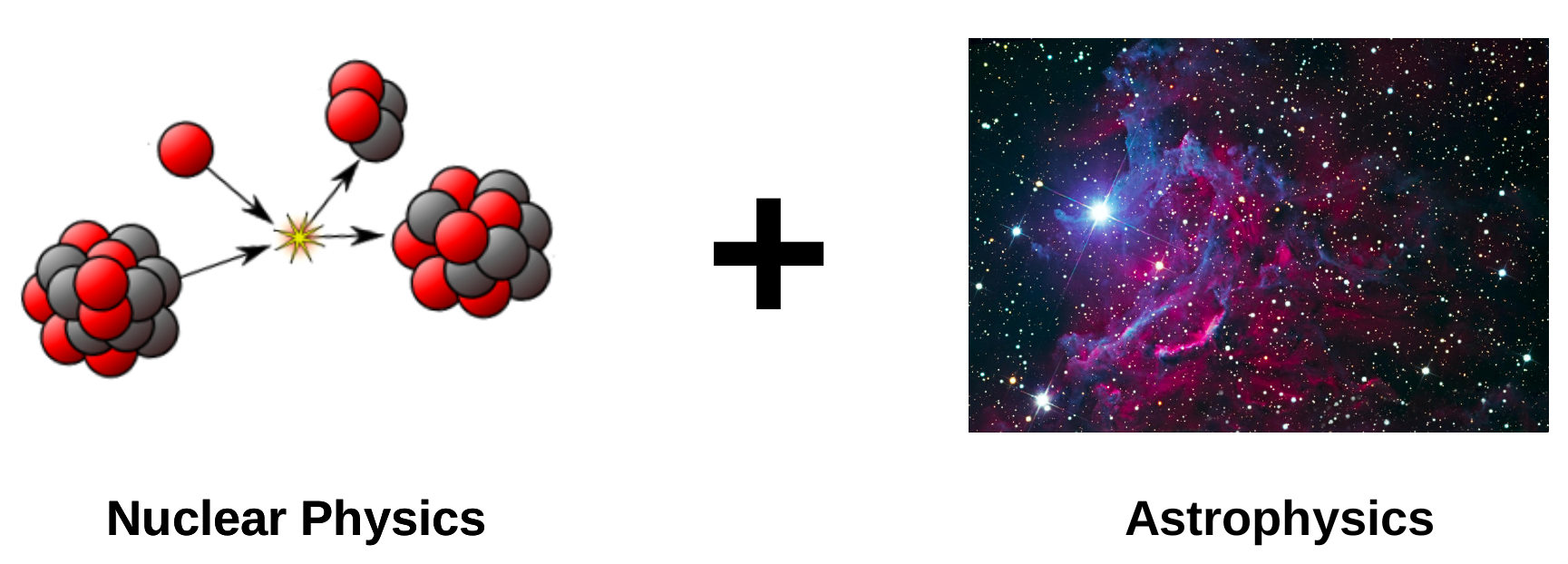
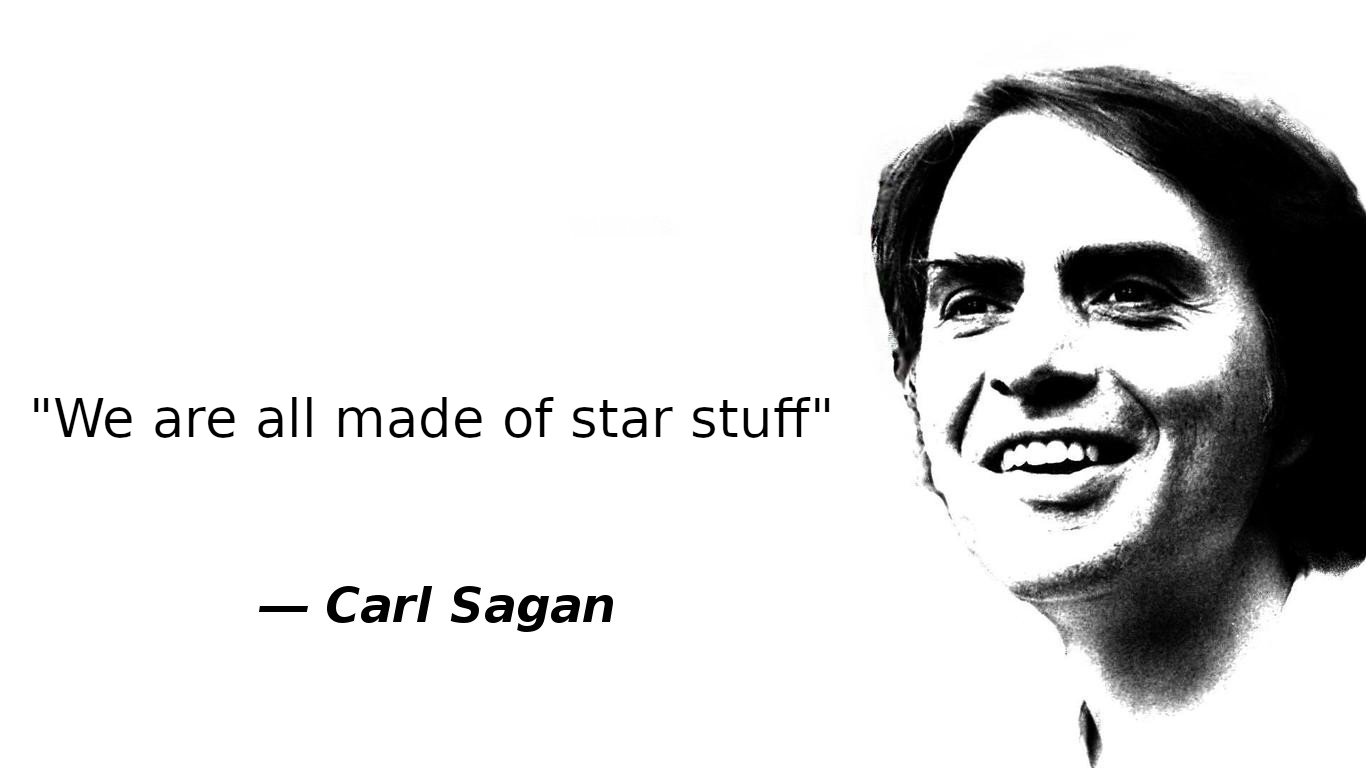
Stuff in the solar system
Abundance is a quantity denoting how much stuff
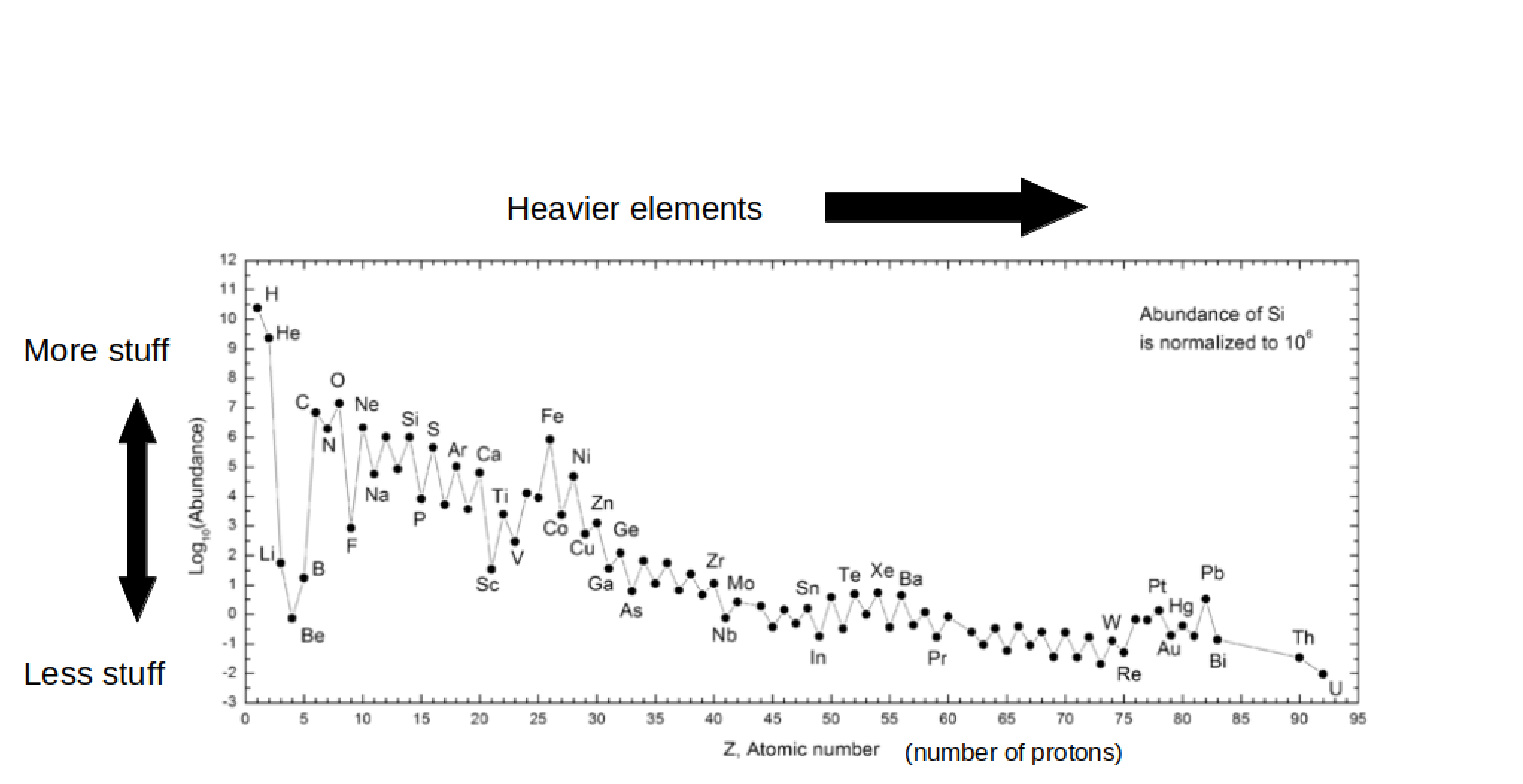
Question: Where do we get this observational information?
Hint: The sun has 99% of the mass of the solar system
Stuff in the solar system
(Answer: meteorites and photospheric observations)
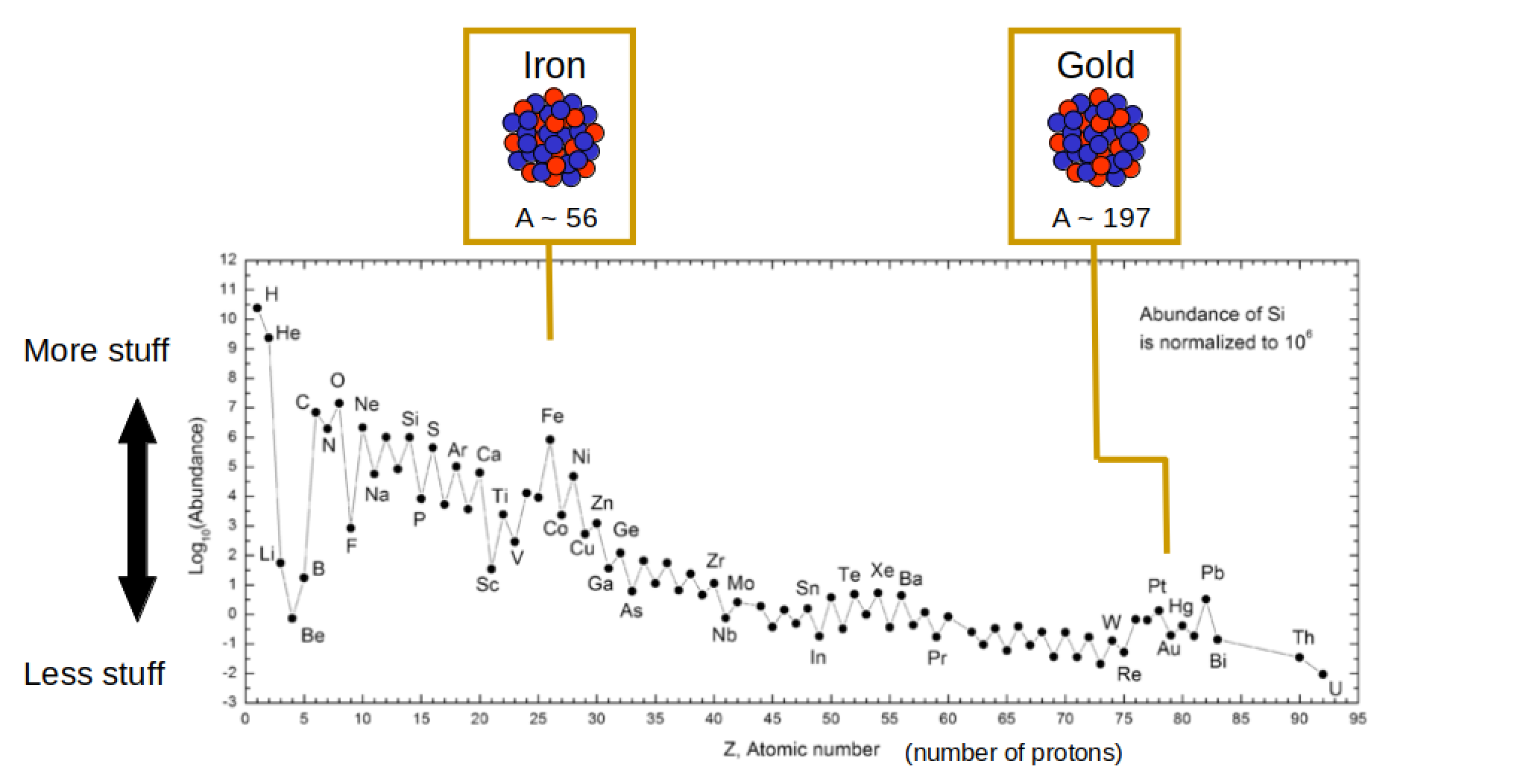
The formation of the heavy elements didn't occur all at the same time nor the same place
What is the origin of the elements?
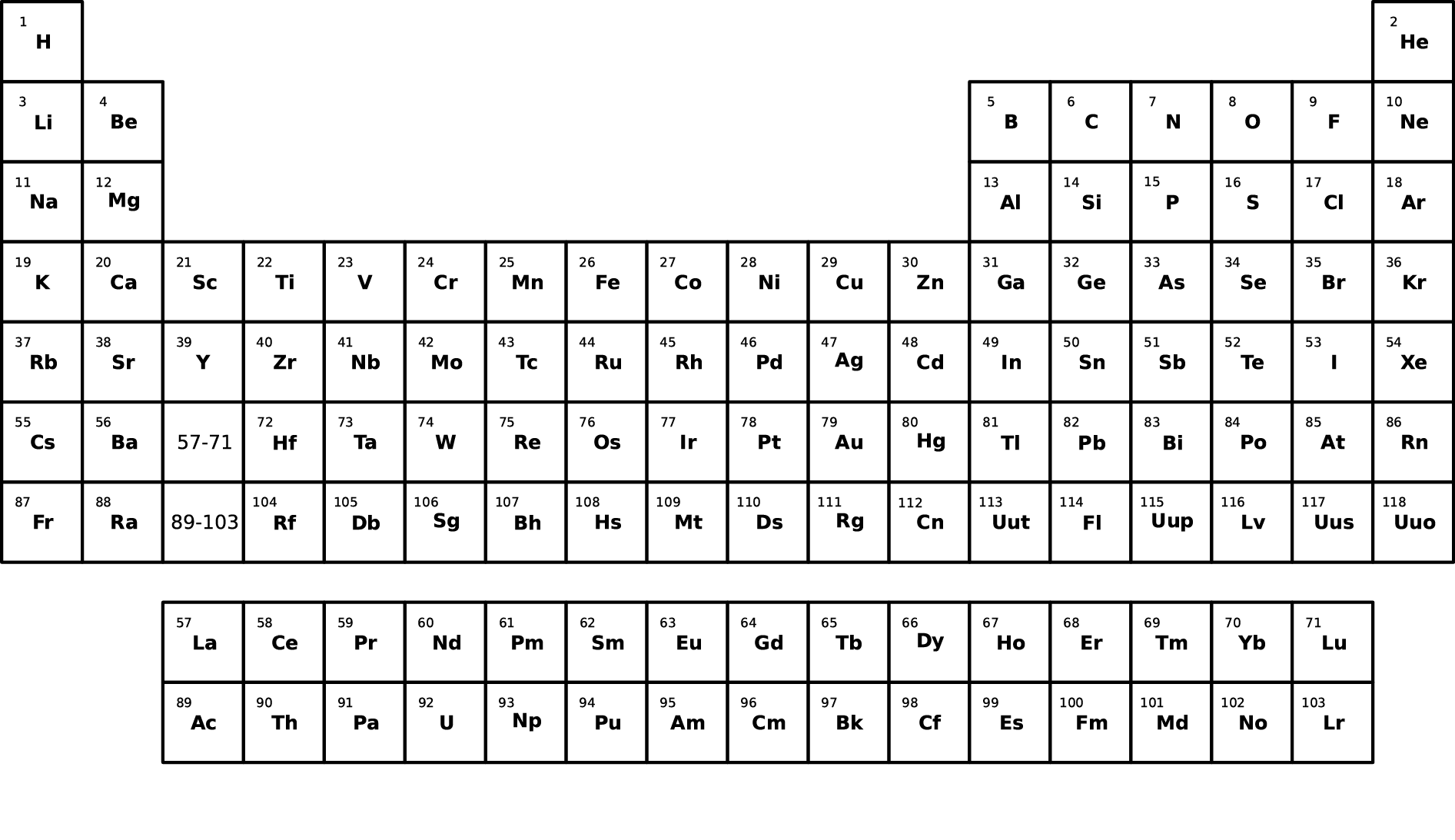
This requires a lot of detective work...
Lightest elements: big bang
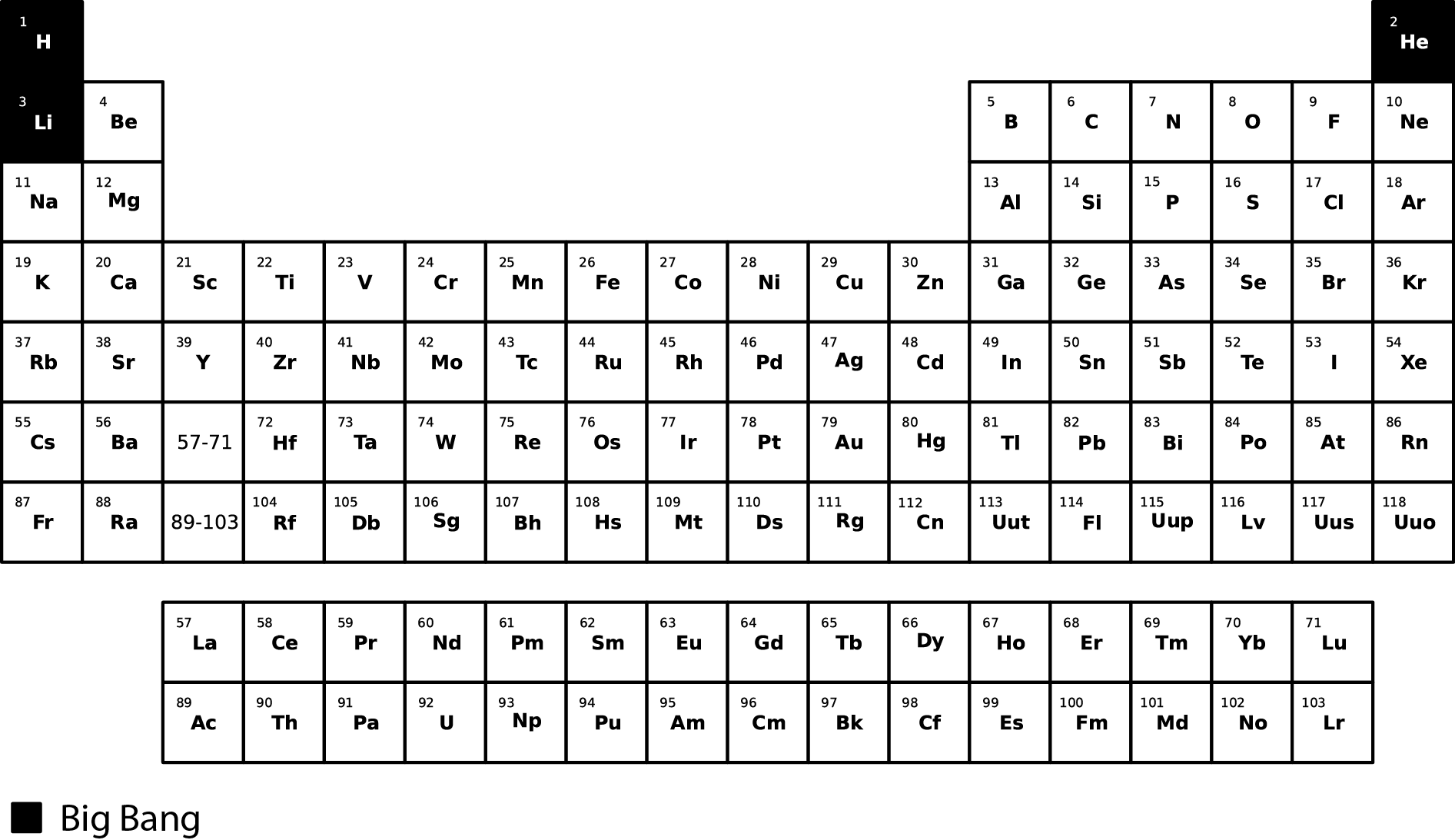
The Big Bang
Created most of the hydrogen (H) and helium (He) in the universe.
Started within the first 3 minutes of the beginning of the universe.
Ended within about 20 minutes due to expanding and cooling.
Only 12 key reactions to take into account (easy!?)
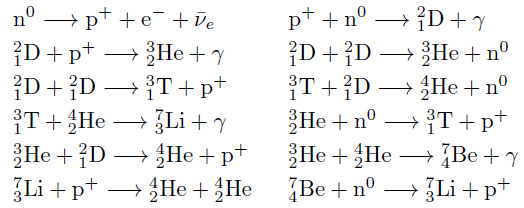
Spallation by cosmic rays
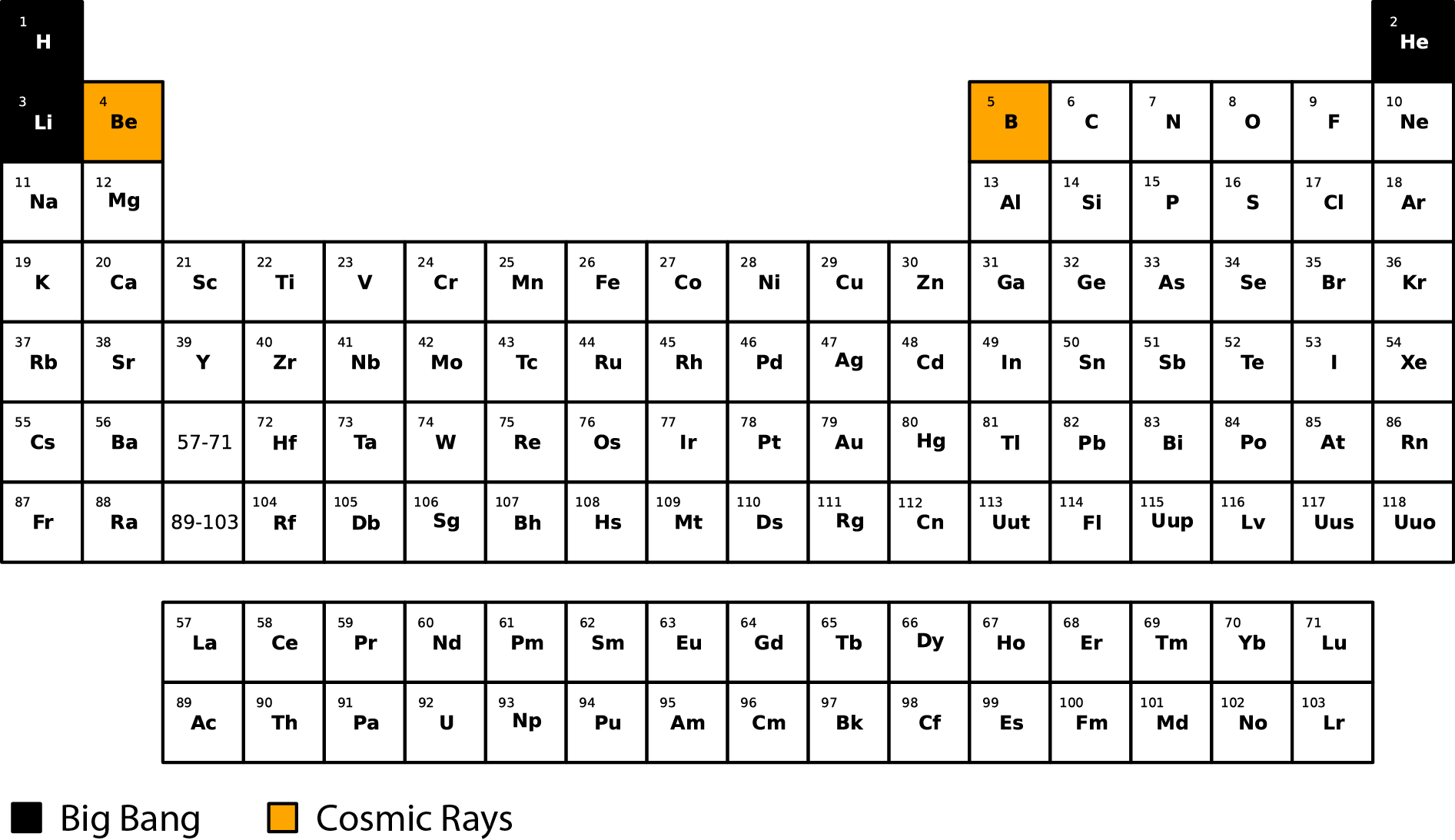
Remember the dip in the solar abundances?
Stellar burning
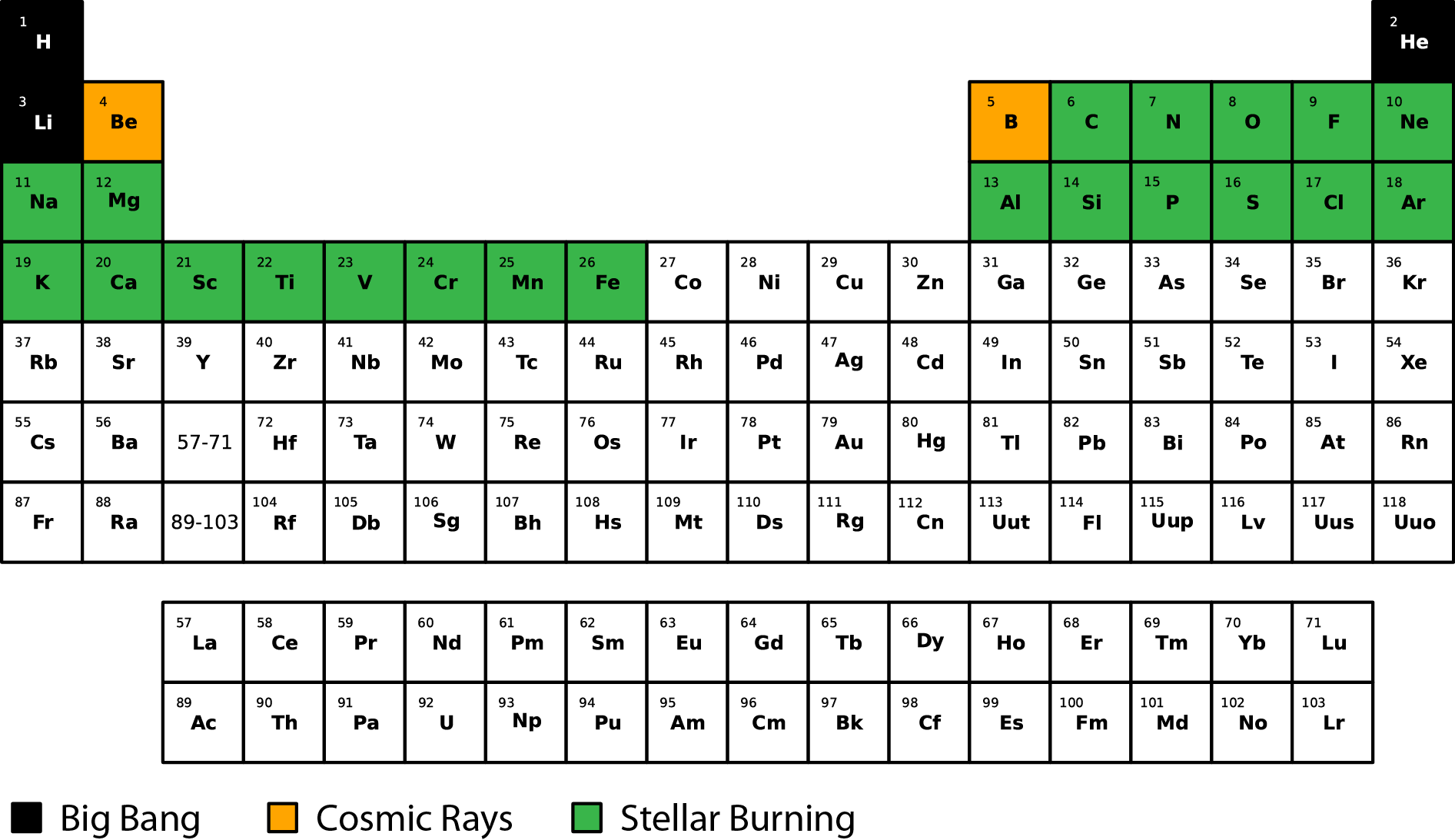
Stellar burning
Nuclear fuel for the existence of stars
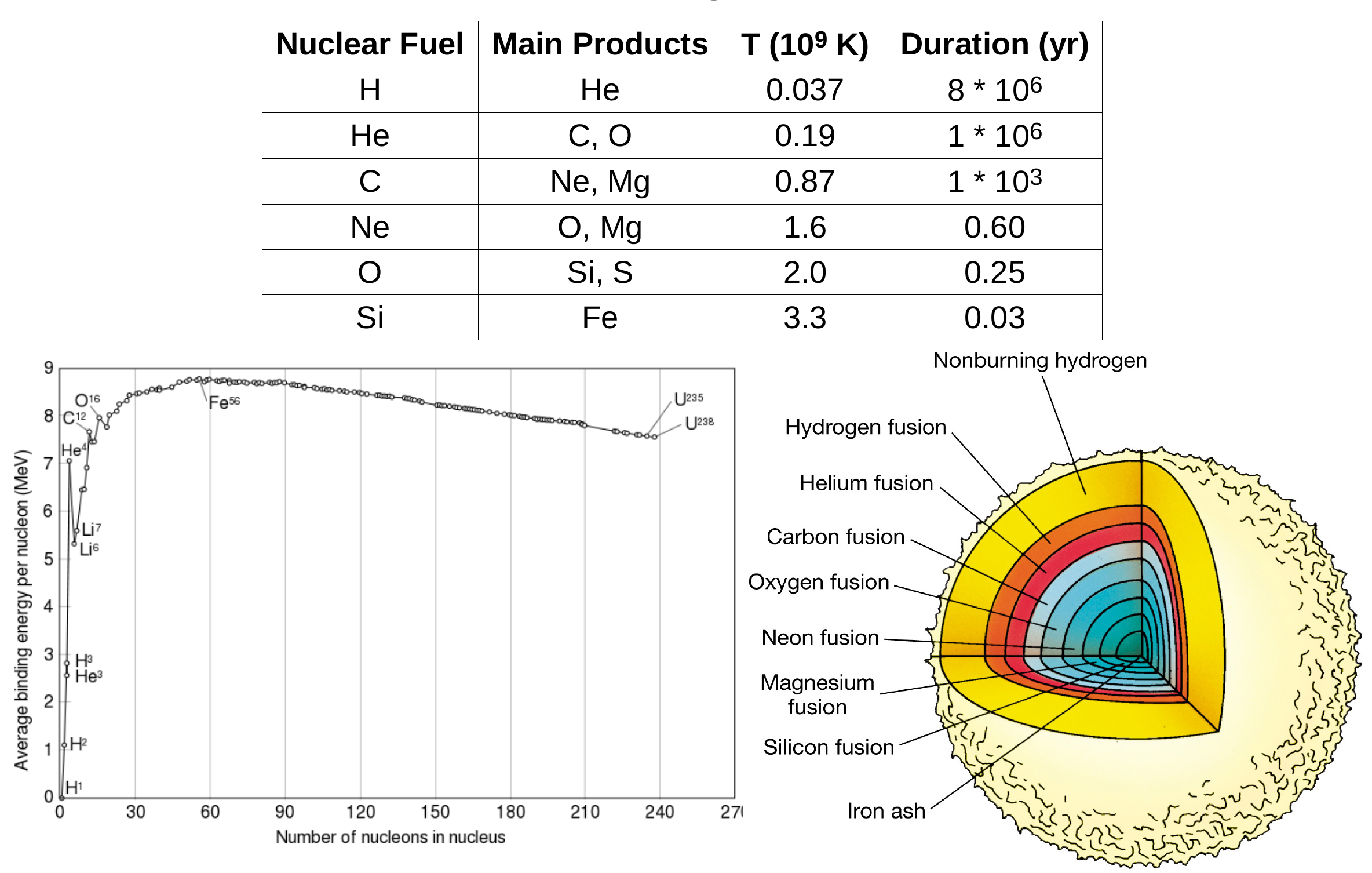
Heavy elements: dying stars, compact objects
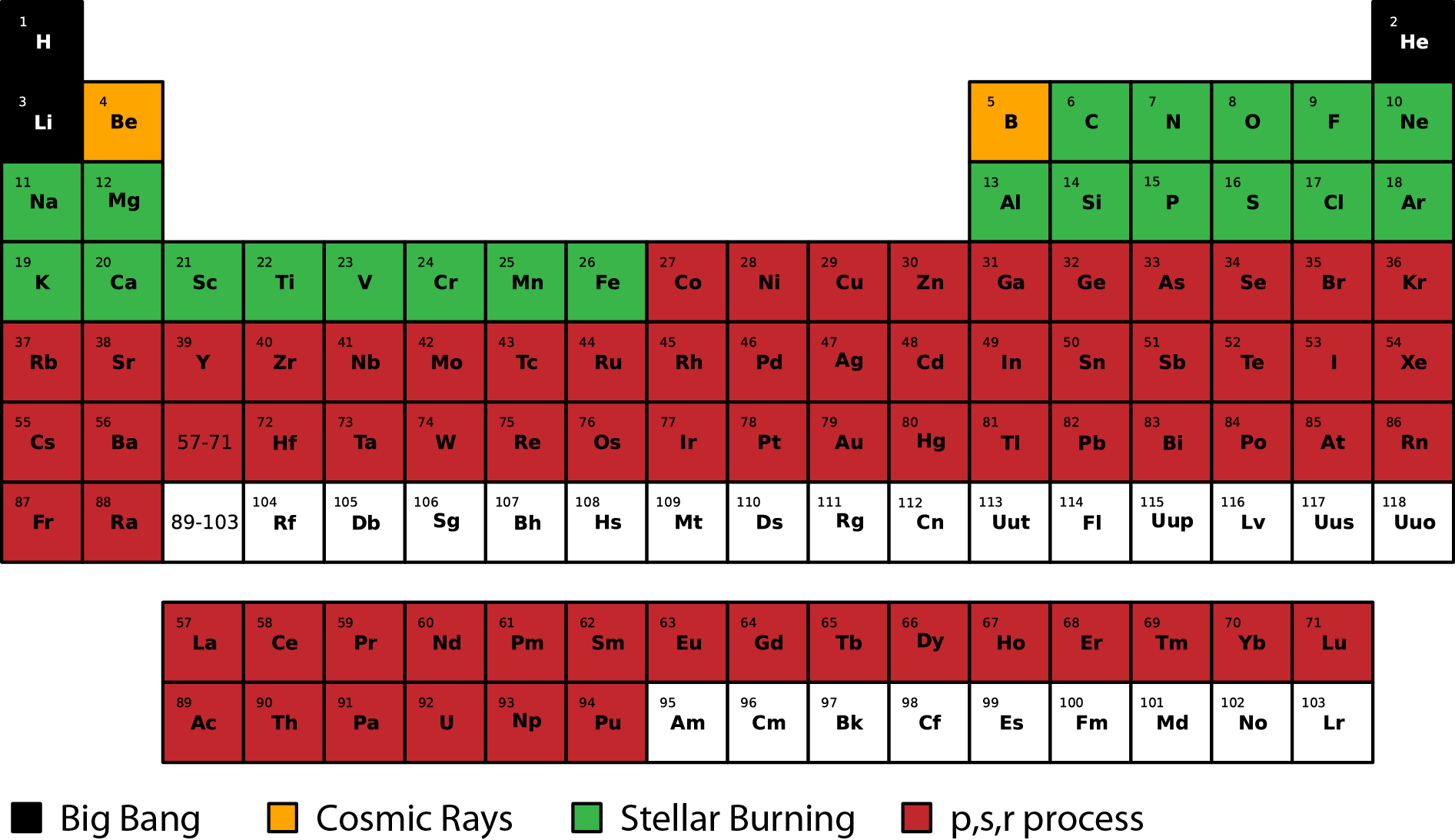
This is area is a hot topic of current research...
Heaviest elements: man made
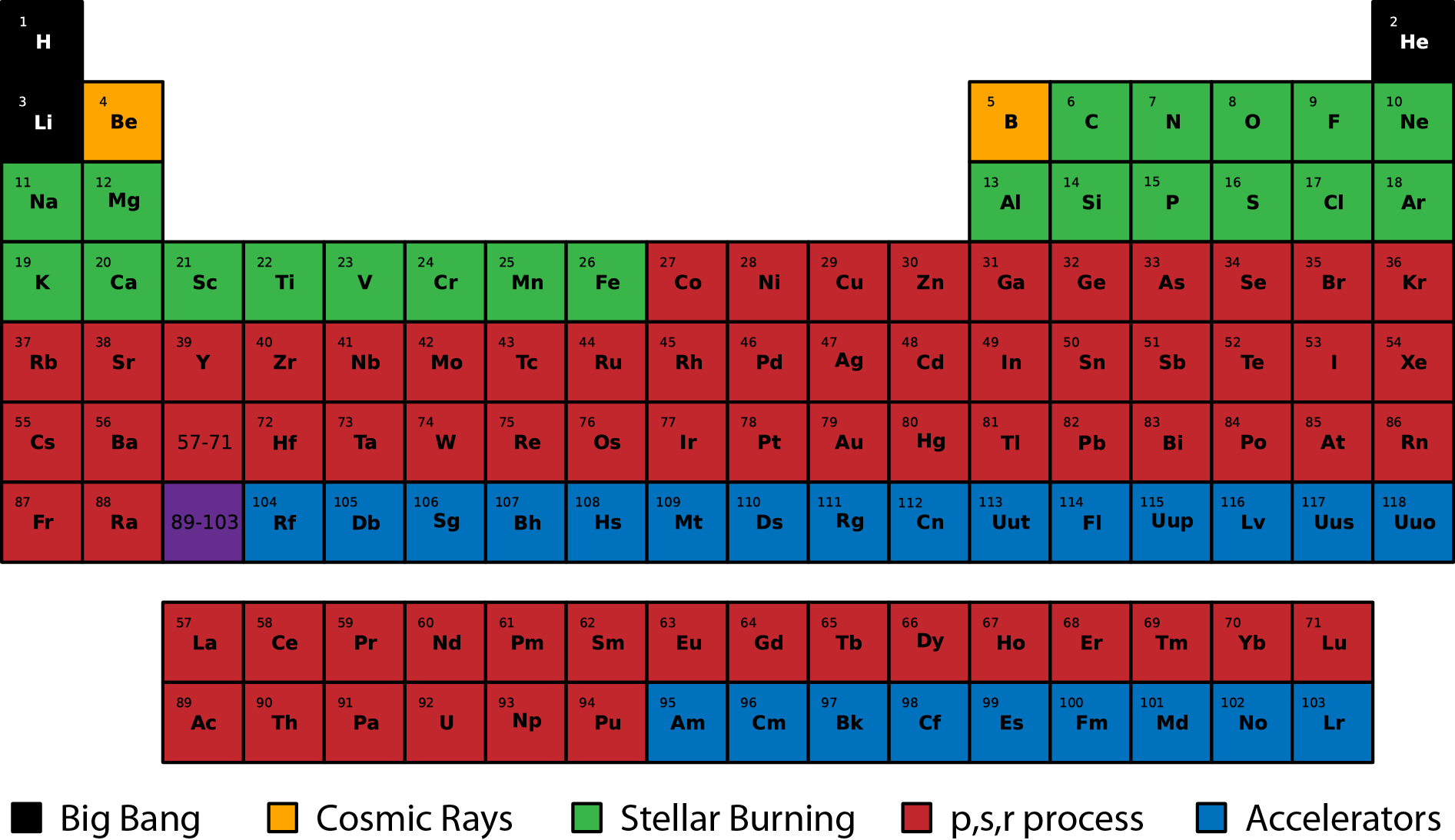
Further evidence
of nuclear physics in astrophysics
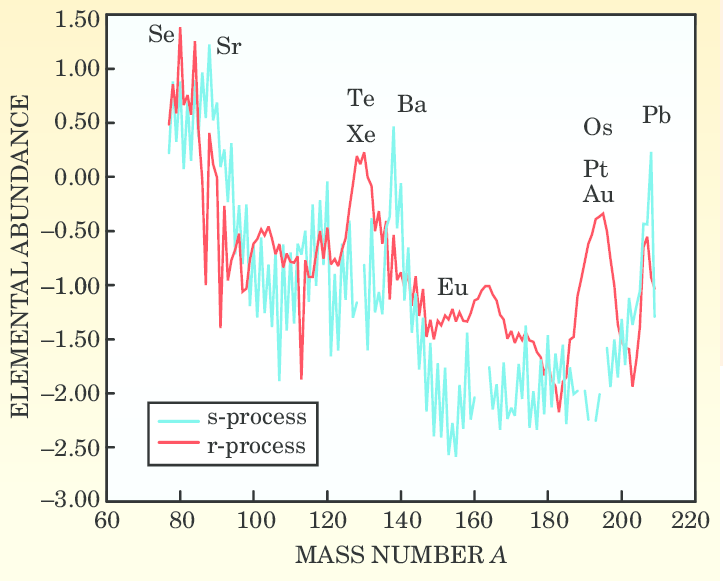
In the isotopic abundances there were two bumps
This implies two different processes are happening
Further evidence
of nuclear physics in astrophysics

Question: What is causing the major bumps (peaks)?
Nuclear structure!
The slow neutron capture process
$s$-process: neutron capture rates are slow relative to $\beta$-decay; $\tau_n$$ \gg $$\tau_\beta$
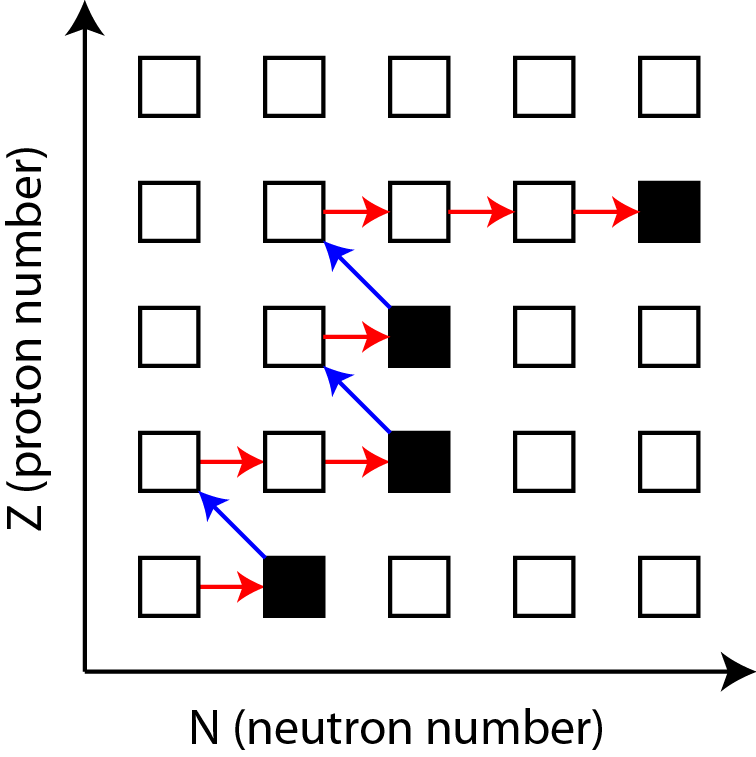
$(Z,N) + n$ ↔ $(Z,N+1) + \gamma$
$(Z,N)$ → $(Z+1,N-1) + e^{-} + \bar{\nu}_{e}$
How do we form the peaks?
$s$-process: neutron capture rates are slow relative to $\beta$-decay; $\tau_n$$ \gg $$\tau_\beta$

This process stays very close to the stable isotopes • most nuclear physics inputs are known
Primarily occurring in AGB stars
Radiative Neutron Capture
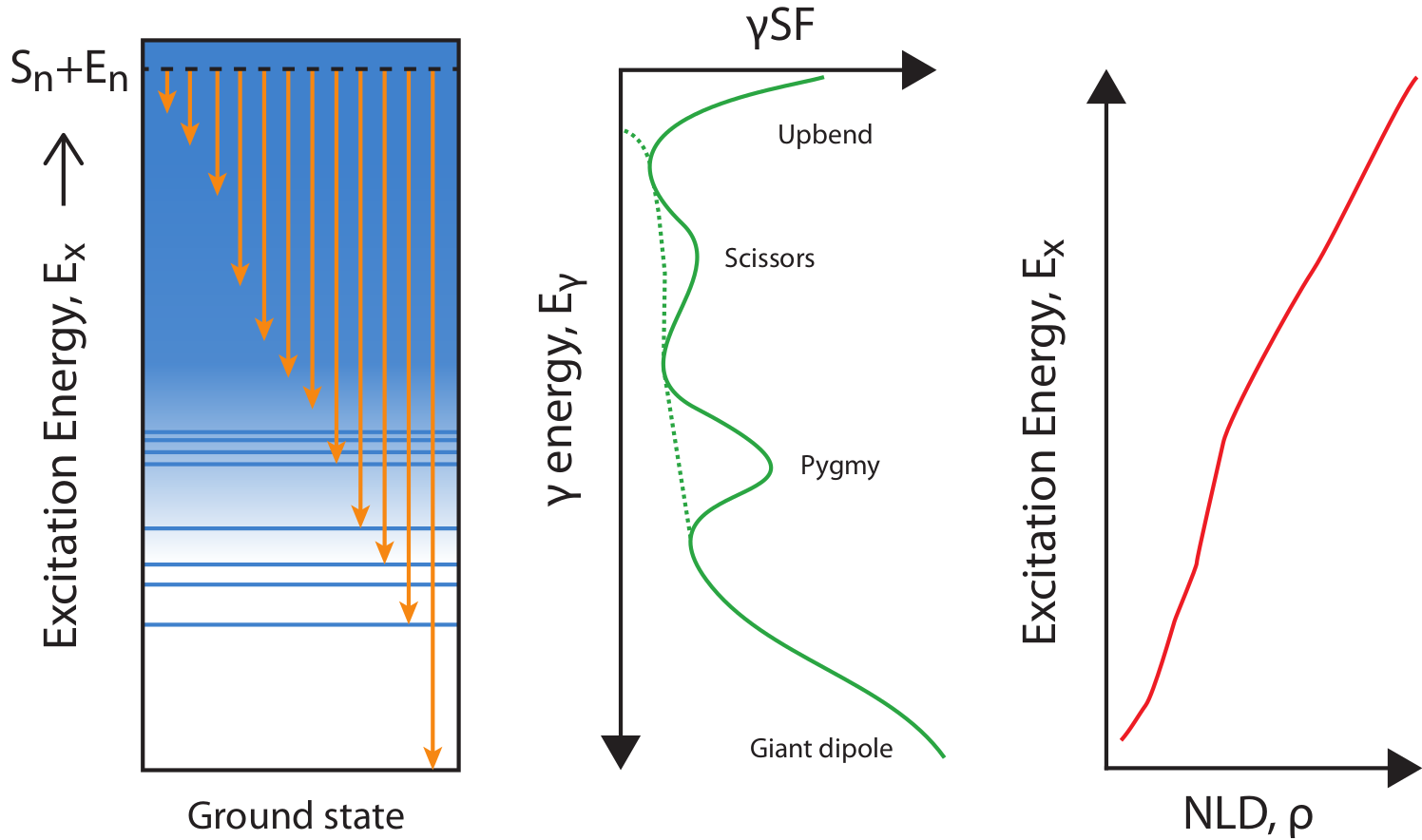
$(Z,N) + n$ ↔ $(Z,N+1) + \gamma$
Key components: Optical potential • $\gamma$-ray strength function ($\gamma$SF) • Nuclear Level Density (NLD)
Nuclear $\beta^{-}$-decay
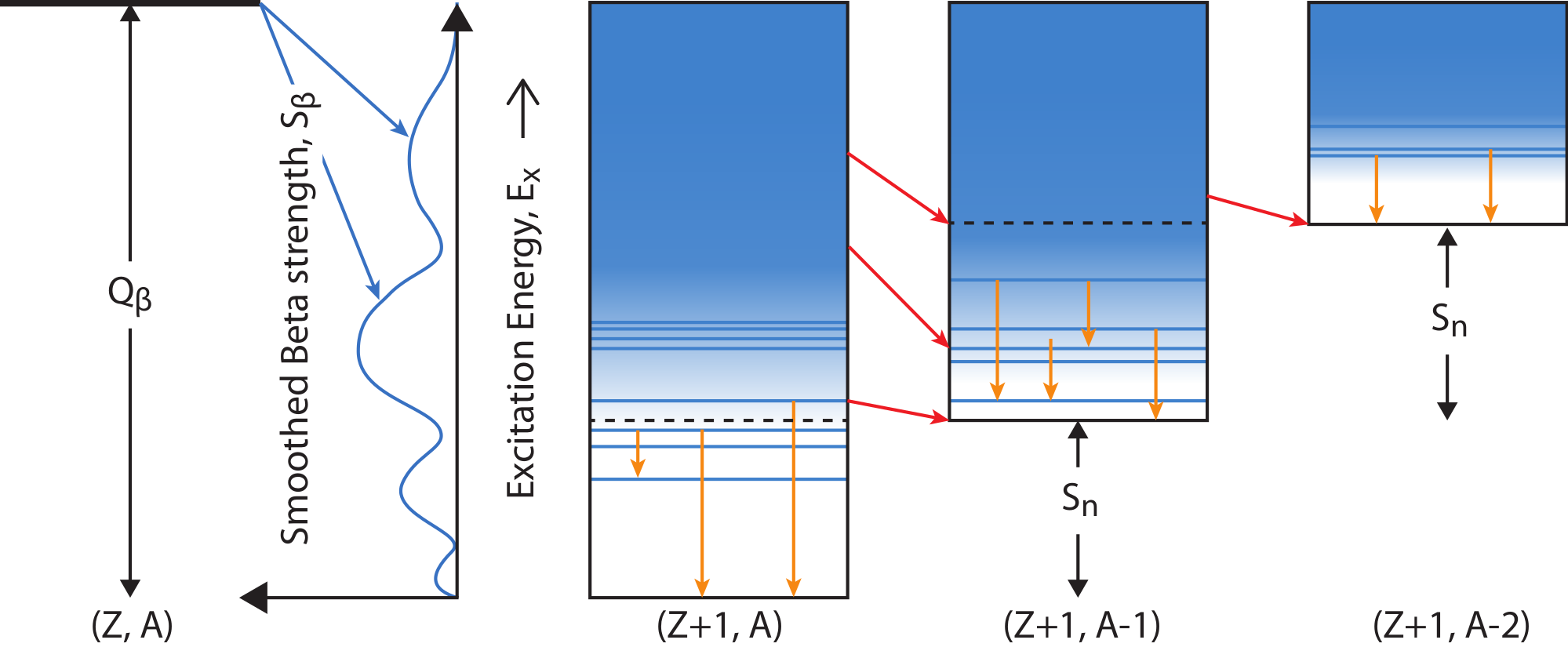
$(Z,N)$ → $(Z+1,N-1) + e^{-} + \bar{\nu}_{e}$
Key components: Fermi's Golden Rule • nuclear levels • binding energies • $\gamma$SF / NLD
As we add neutrons: $Q_{beta}$ ⇡ $S_{n}$ ⇣ so what happens?
We release more neutrons!
What happens when $\tau_n$$ \ll $$\tau_\beta$?

We're going to go far from the stable isotopes (further to the right)!
This is known as the rapid neutron capture process ($r$-process)
The $r$-process

Believed to be responsible for roughly half the elements above iron
All of the actinides are produced by this nucleosynthesis process; many neutrons required
Major problem: We only have hints of where this process occurs in nature
Another major problem: we barely have any nuclear data in this region
Why?... nuclei are short-lived
One possible candidate site: supernova
End of the life of a massive star
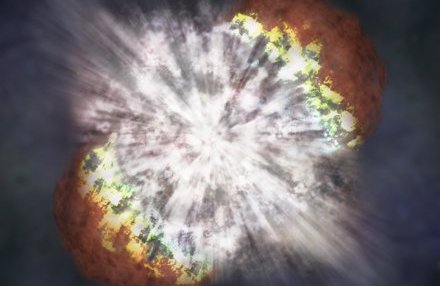
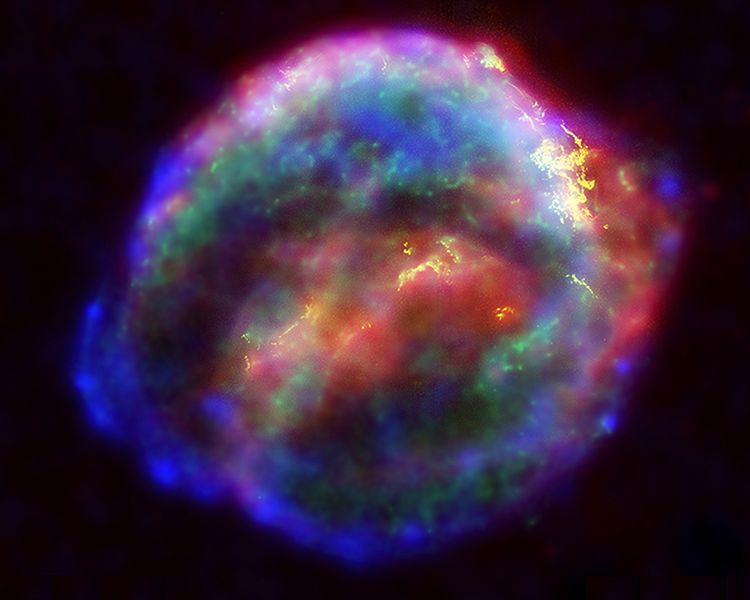
Extremely luminous - burst of radiation that can outshine host galaxy for several weeks expelling the star's material
Can it produce neutron-rich material? This is under debate... MHD jets?
Requires exascale computing to properly model in full 3D
Another candidate site: compact object mergers
Merger of two neutron stars • merger of neutron star with black hole

Very rare events • lots of neutrons! • different types of ejecta
Nuclear physics difficulties of the $r$-process
Every possible neutron-rich species that could exist in nature may be accessed (1000's)
Problem: we have some (incomplete) data for several hundred...
We need binding energies, decay rates, branching ratios, reaction rates, even fission information
There's no way around this... we require nuclear theory
Nuclear physics as the language of the $r$-process
1st order: masses, $\beta$-decay rates, capture rates & fission
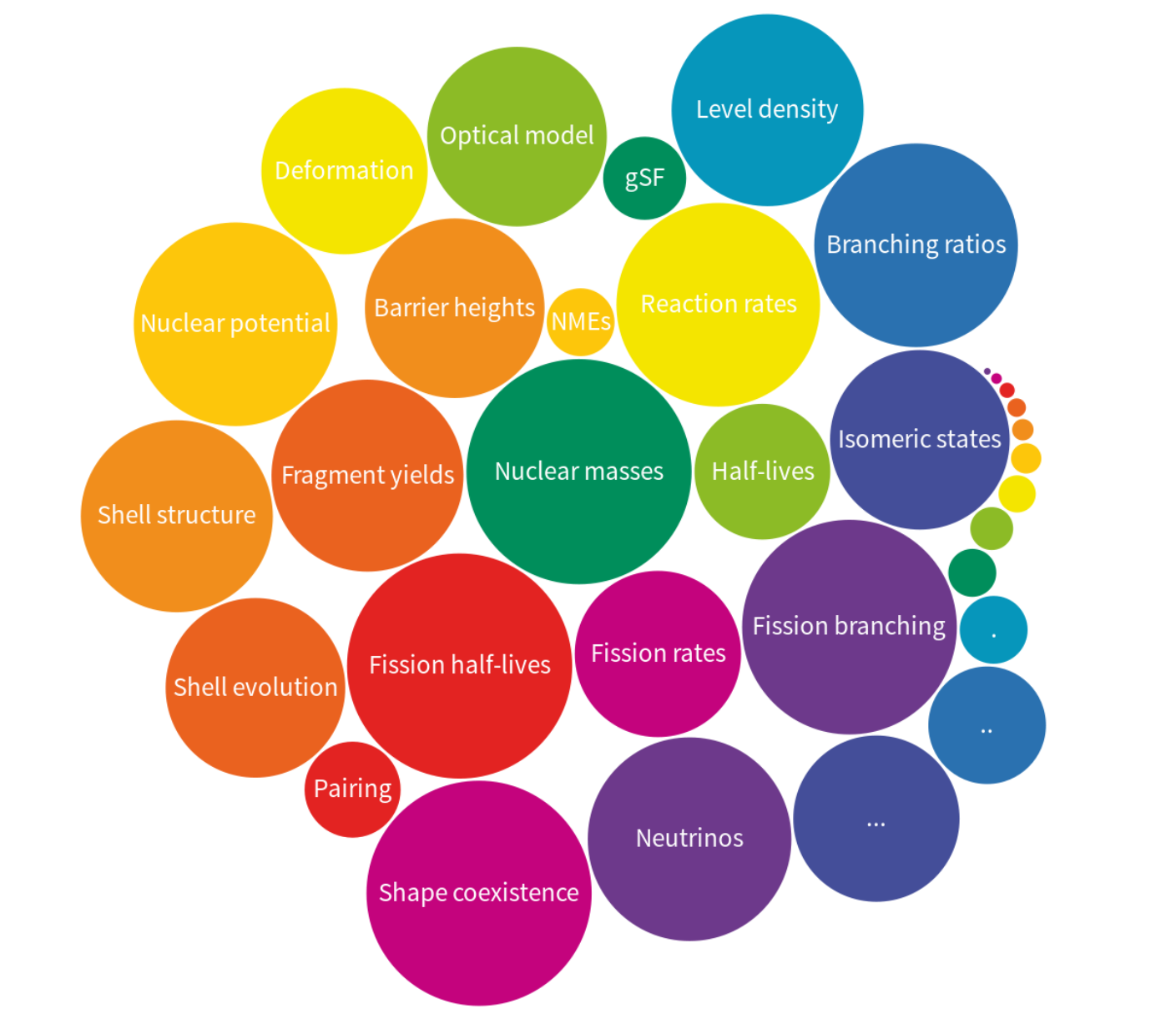
What do we know?
The chart of nuclides
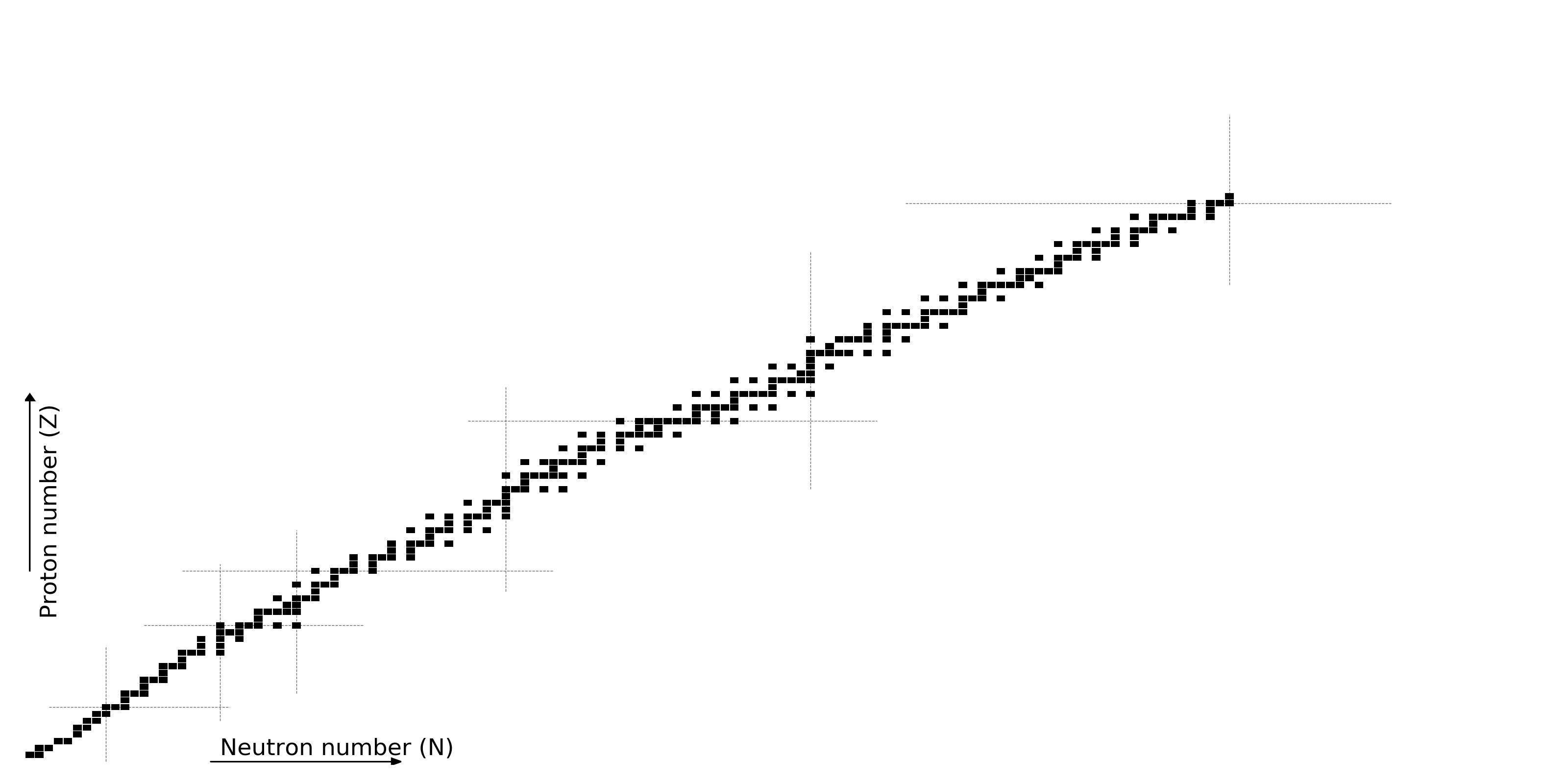
What do we know?
All half-lives

What do we know?
Nuclear masses
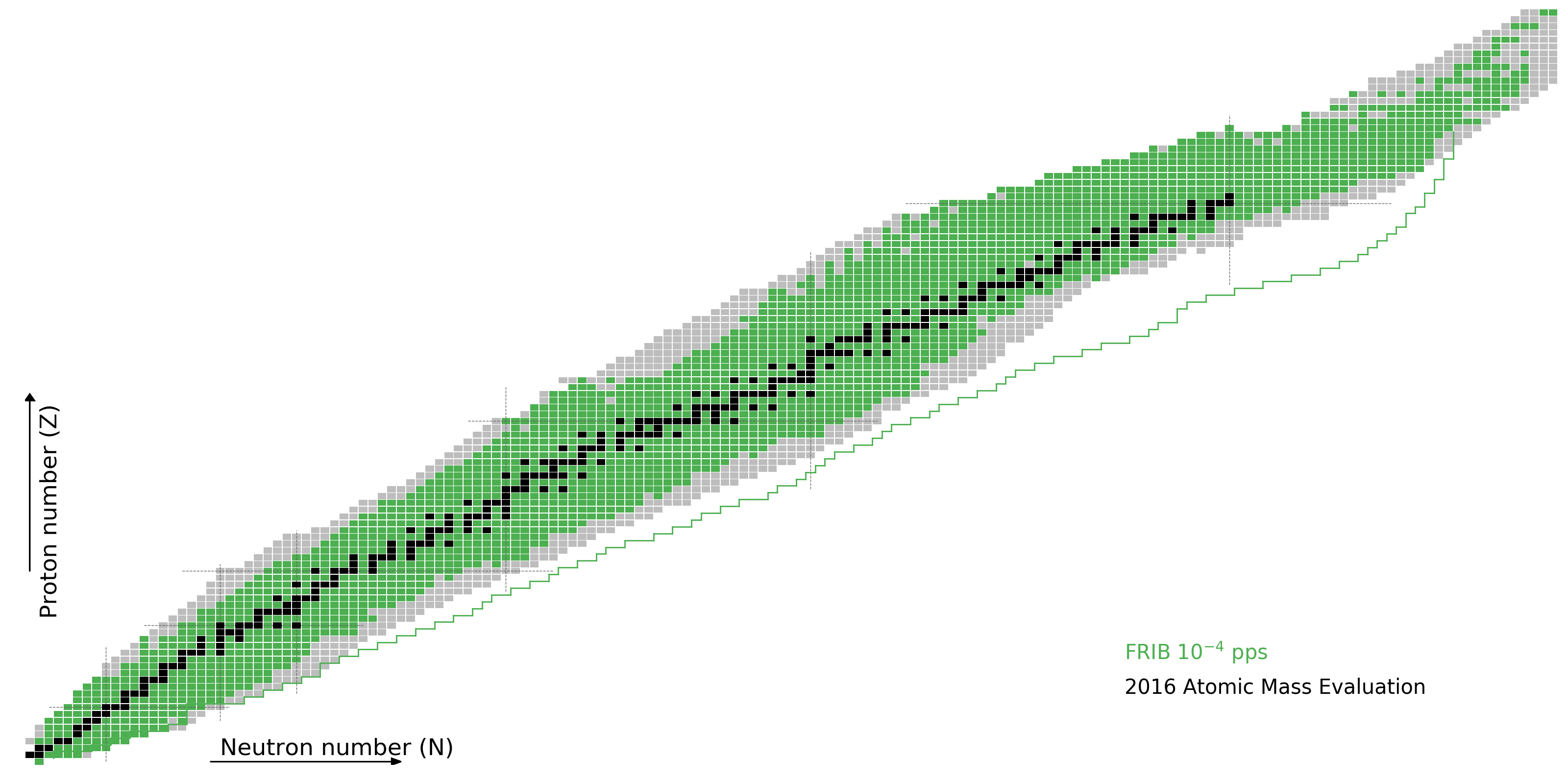
What do we know?
Neutron capture rates
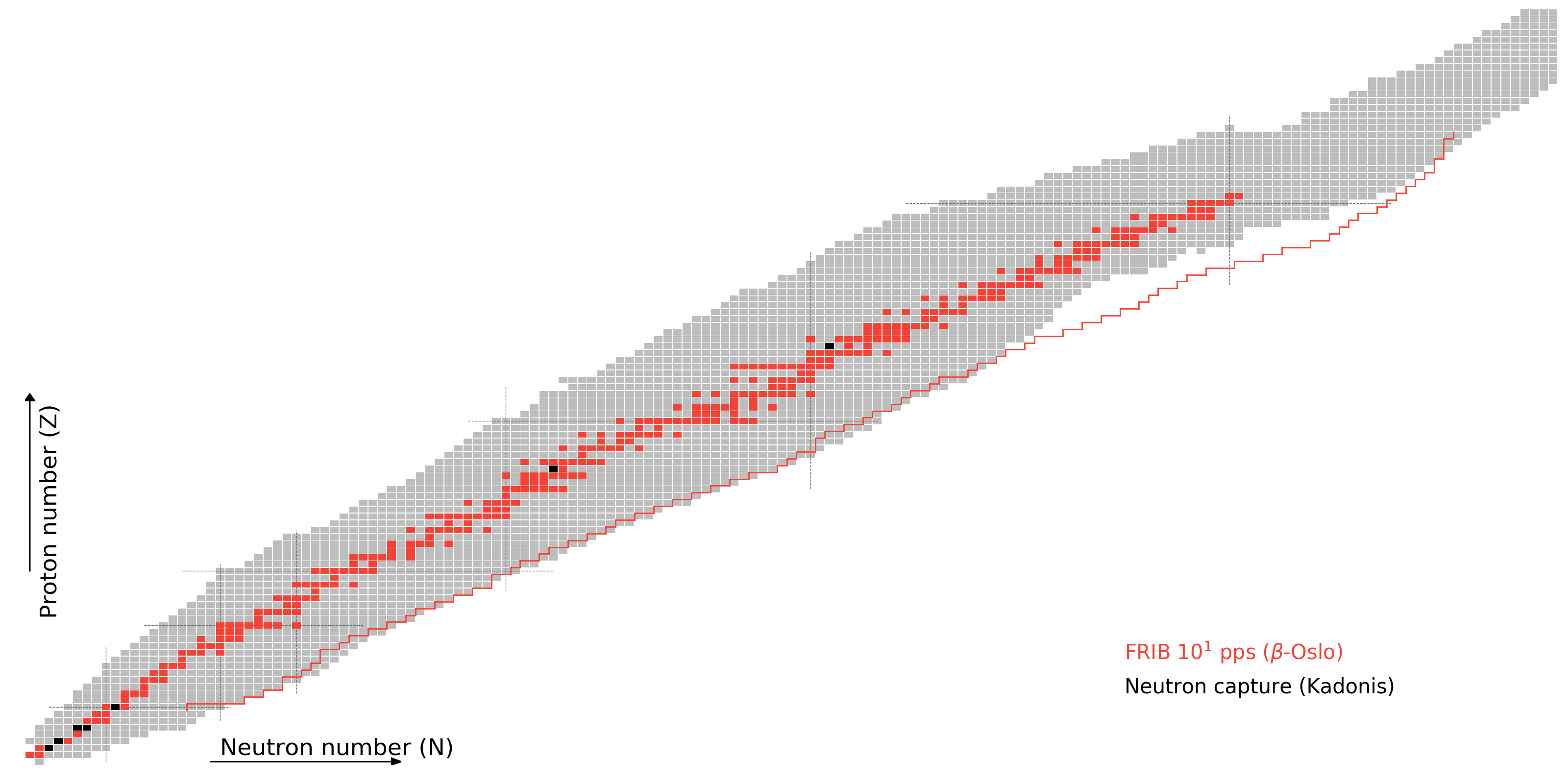
What do we know?
As of today, to varying degrees of accuracy
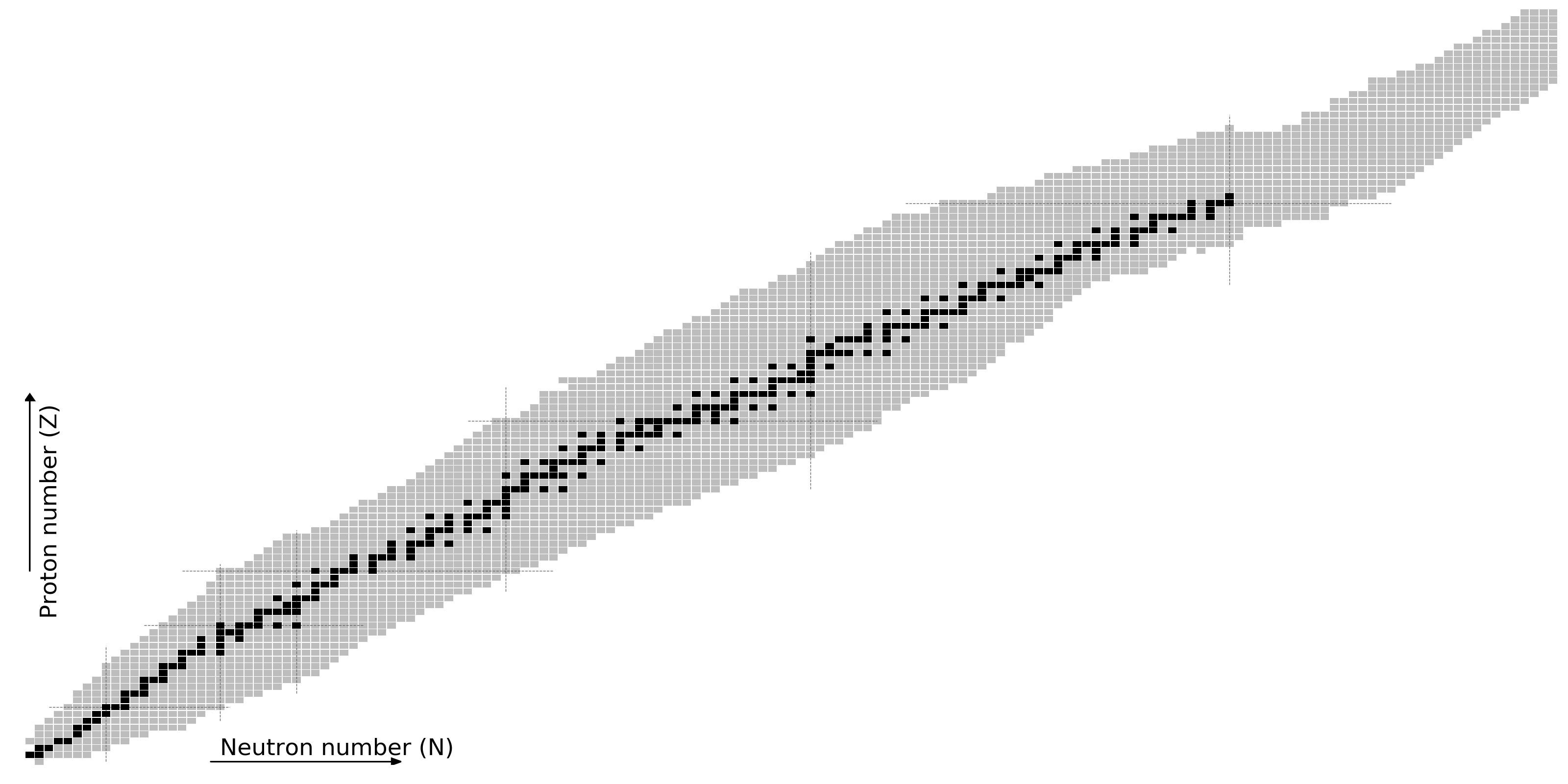
The Future
FRIB as the $r$-process machine
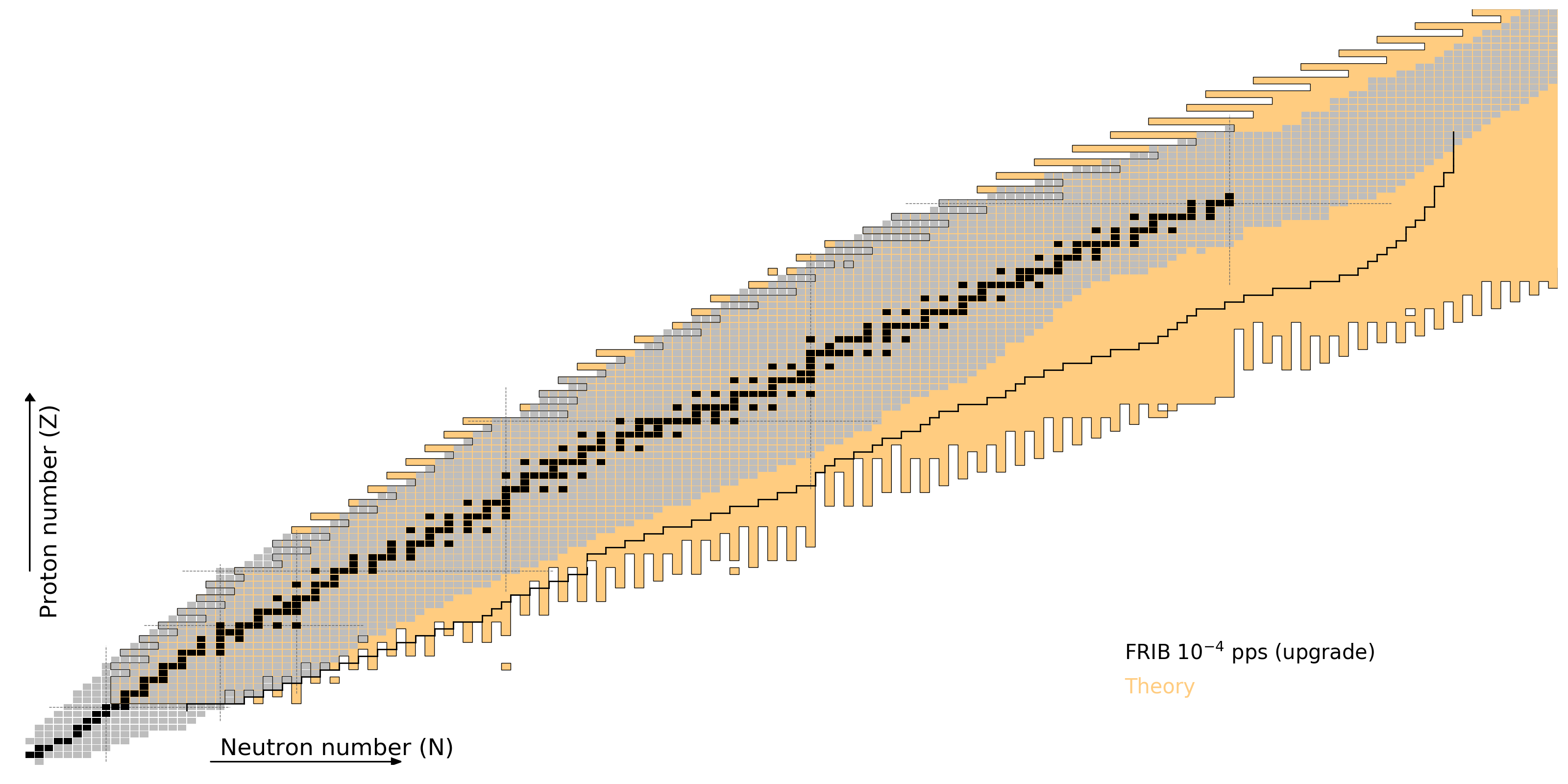
Schematic of nuclear fission

Heavy nucleus is unstable (naturally or via particle absorption) splitting into two lighter fragments
Breaking configuration is known as scission
Ensemble of events produces a fission yield
The high amount of energy released makes it interesting for observations
How does a nucleosynthesis calculation work?
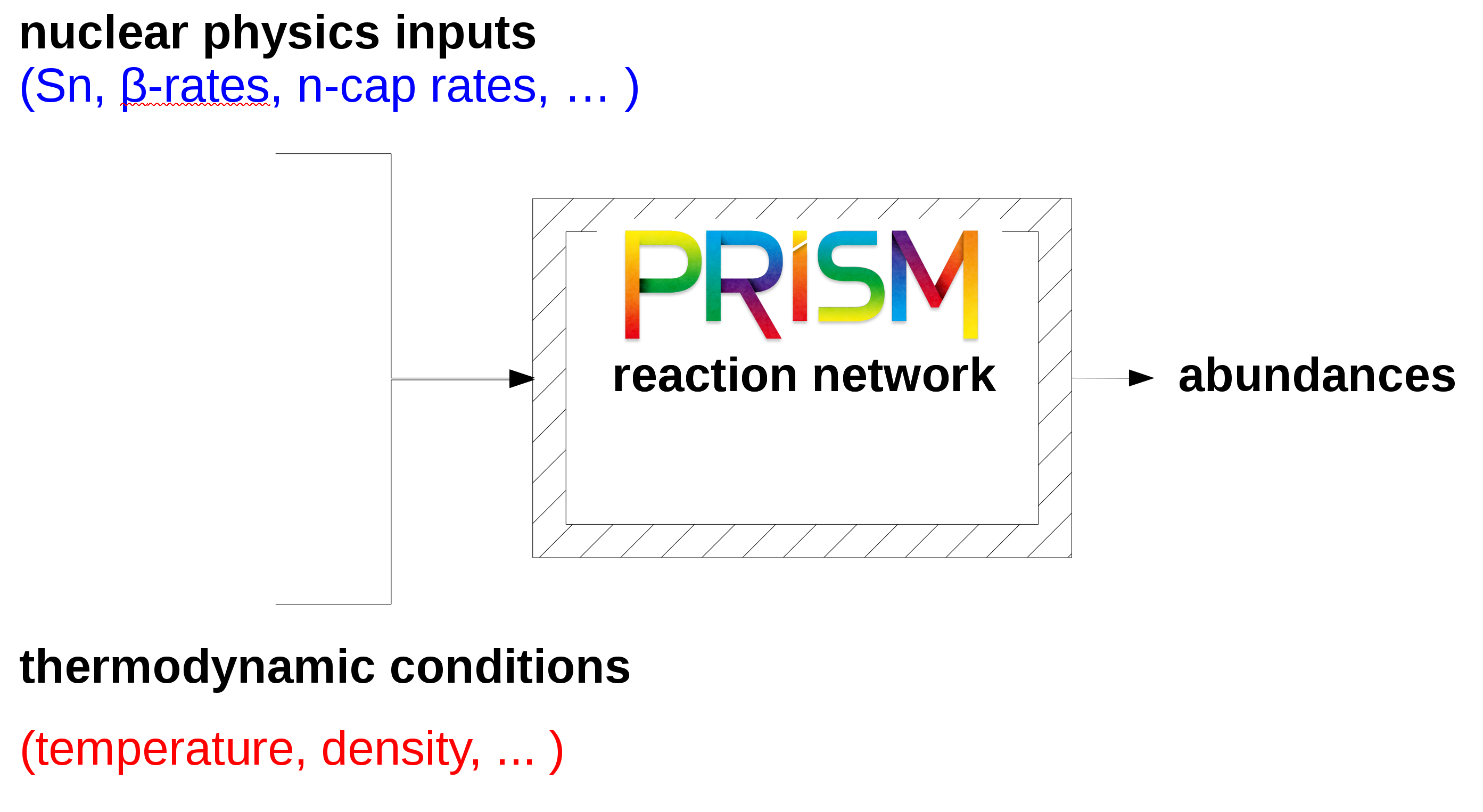
combine nuclear physics inputs with astrophysical conditions
Summary
Nuclear physics is intimately connected to astrophysics
Nucleosynthesis is one aspect of this connection
There are many different nucleosynthesis processes
Big Bang ▴ $s$-process ▴ $r$-process
The formation of the heaviest elements still remains an unsolved problem
FRIB and other facilities will help in this endeavor by constraining nuclear theories used in calculations
More information @ MatthewMumpower.com
